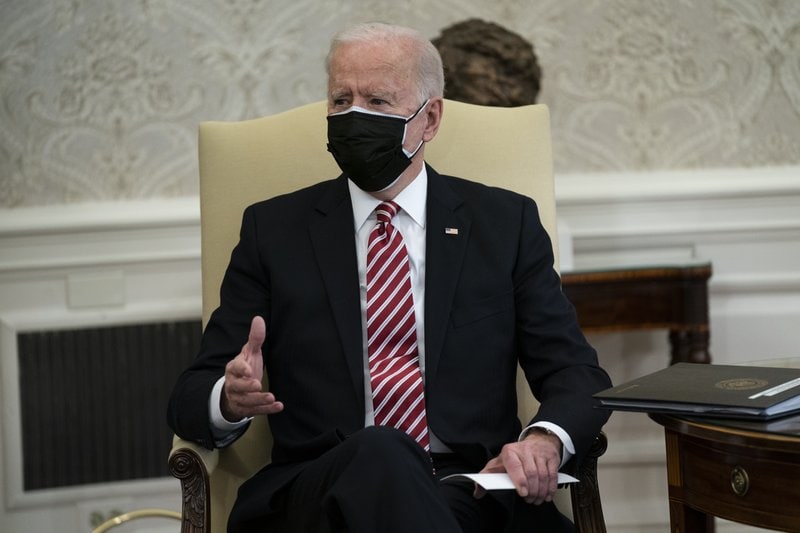
Immigration enforcement in the U.S. would be more targeted under President Joe Biden than under his predecessor, with authorities directed to focus on people in the country illegally who pose a threat, according to guidelines released Thursday.
The guidelines set a new course for U.S. Customs and Immigration Enforcement, which drew fierce criticism under President Donald Trump for arresting and removing anyone in the country illegally regardless of criminal history or community ties.
Under Biden, ICE would primarily apprehend and remove people who pose a threat to national security, committed crimes designated as “aggravated” felonies or recently crossed the border.
It is the latest break from Trump’s immigration policies, but it is also far from the notion of “abolish ICE” that became a rallying cry among some progressives angered by what they considered indiscriminate enforcement.
Trump, whose administration took hundreds of measures to restrict both legal and illegal immigration, early on directed ICE to apprehend anyone who was in the country illegally. In June 2019, he tweeted that “next week ICE will begin the process of removing the millions of illegal aliens who have illicitly found their way into the United States.”
That never happened. Total deportations were higher under the first term of President Barack Obama, who also made national security and public safety an enforcement priority, than under Trump in part because many cities and states, opposed to his administration’s approach to immigration, balked at cooperating with ICE on removals.
The Department of Homeland Security, which oversees ICE, portrayed the new guidelines, which are considered temporary until a permanent policy comes down in about three months, as a smarter use of limited resources at an agency that has about 20,000 law enforcement and support personnel.
“Like every law enforcement agency at the local, state, and federal level, we must prioritize our efforts to achieve the greatest security and safety impact,” ICE acting Director Tae Johnson said in announcing the new guidelines.
But ICE officers and agents have expressed concern in recent days about a top-down directive that will limit their ability to conduct enforcement operations and inevitably result in potentially dangerous people slipping from their grasp, said Jon Feere, a senior adviser to ICE under Trump.
Feere noted, for example, that worksite enforcement operations, which occurred more frequently under Trump, typically result in charges such as identity theft or fraud. Those wouldn’t qualify as aggravated felonies but nonetheless can be useful crimes to pursue to help break up smuggling rings and traffickers.
“Not allowing ICE to carry out its responsibilities as it does now is a de facto dismantling of the agency,” he said. “And what is the policy rationale? Who wins from all of this? The smugglers? The traffickers?”
In defending the new guidelines, DHS officials pointedly noted that they do not specifically exempt anyone from being arrested and removed from the U.S. if they are illegally in the country.
But they set out a series of priorities for removal, and agents and officers would be required to get approval to pursue cases that aren’t in the three main categories. Also, weekly arrest reports would be submitted to DHS Secretary Alejandro Mayorkas, who has repeatedly said he wants to fix what he considers a flawed U.S. immigration system.
The national security category includes anyone suspected of involvement with terrorism or espionage. The border security category covers anyone apprehended along the border or point of entry. The public safety category applies to anyone convicted of a crime who is an active participant in gang activity or convicted of an aggravated felony.
There is a wide array of aggravated felonies that apply to noncitizens as laid out by Congress. They include violent offenses and drug trafficking, but in the past have also been defined more broadly for noncitizens facing deportation.
ICE would have broad leeway to let a noncitizen stay in the country under the guidelines, with officers directed to consider such factors as ties to the community, personal and family circumstances and medical condition.
___
Republished with permission of The Associated Press.



